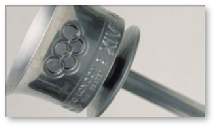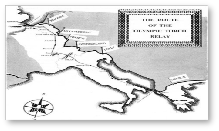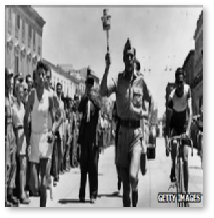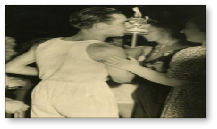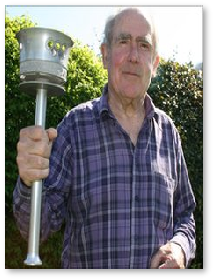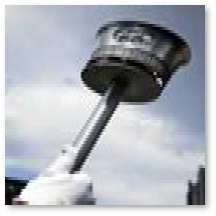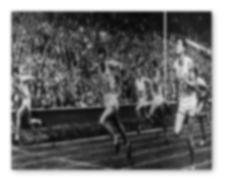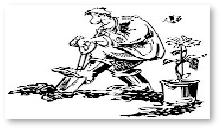

Current Site Adapted, Maintained & Hosted by DTKM from the Original “Methwold On The Net” site by Colin Marsland
Through the pages on this site we hope to provide information for locals and visitors alike whilst serving as a base to build greater community links and networking
We hope you enjoy browsing the site and that you will return time and time again as it evolves
Please feel free to contact us should you require any further information, have any comments regarding the present site or improvements you can suggest and would like to see
The Methwold Web-
Web Design & Hosting





Web Design & Hosting




Methwold.net uses Cookies to help us monitor, review and improve the site See Our Privacy Policy for details




SPORTS SPECIAL
Olympic Torch comes to Methwold 04/06/2012
Loughborough roots of 1948 Olympic torch relay
Commander Collins organised the torch relay for the 1948 London Olympic Games
An Olympic torch used during London 's last Games has roots in the Leicestershire town where it is kept.
The organiser of the 1948 torch relay, Cdr Bill Collins, bequeathed the historic item to Loughborough College , where he taught athletics.
Letters in an accompanying archive detail how local manufacturers Brush declined a request by Cdr Collins to make the 1,688 torches for the relay.
The 1948 flame travelled 1,964 miles (3160km), from Greece to Wembley.
The flame was escorted across the Channel by the Royal Navy, to be greeted by 50,000 people who watched Chief Petty Officer Herbert Barnes carry it onto British soil. After carrying the flame and passing it on, runners were allowed to keep their torch as a memento.
Cdr Collins' archive also includes original drawings depicting early designs of how the torch might have looked. Two months ago, his torch was paraded through the town by group of school children and 1948 bronze medallist Tommy Godwin, to mark 500 days before the start of London 2012.
Loughborough University is set to host the Great British and Japanese Olympic teams, as they train for London 2012.
London 2012: The 1948 torch relay on a shoestring
Not the Duke of Edinburgh or athletics hero Sydney Wooderson, John Mark was the surprise last torchbearer in the '48 Relay.
Plans are under way for a 2012 Torch Relay spanning the UK. But what happened last time London staged one?
It was no 70-
Ahead of London 's "Austerity Games", organisers wanted to stage a relay to "capture the imagination of the public and the spirit of the Olympic torch".
London 1948 Olympic Torch
- Made of aluminium
- Designed by Ralph Lavers
- 47cm long
- 960g weight
- 1,688 made for use across Europe and England
- 1,416 runners
- Covered 3,160km (1964 miles)
- Last runner, John Mark, had a special stainless steel torch
The organising committee, led by Lord Burghley, decided to continue the pre-
"A lot of wartime conditions were still in place. Not just food rationing but clothes rationing, everything was in short supply. "There were few cars, the petrol allowance was so small. It was a very grey time and a very bleak winter in 1947 set things back."People would have resented the Olympics if too much had been spent, with Britain in the fairly parlous state it was in. "Britain could barely afford to stage the Games, let alone a torch relay, so its size, scope and the torch itself had to be affordable.
'British craftsmanship'
Hold a 1948 Olympic torch and its simplicity is revealed -
The torches were made of aluminium, which was relatively cheap, and ran on solid fuel tablets, except the one for the final leg at the opening ceremony inside Wembley's Empire Stadium. It was stainless steel and housed a magnesium-
In 2012, the torch will cover the UK, aiming to come within one hour's journey of 95% of the population. In 1948 the domestic plan was less ambitious.
Instead, the relay had a wide scope on its European leg. It was a "Relay of Peace" starting from Greece , through Italy , Switzerland , France , Luxembourg and Belgium on its way to England. It aimed to unite a Europe shattered by World War II and still in turmoil. The torch pursued a quick path through an unstable Europe
The Games' official report tells how on 17 July in the ancient stadium at Olympia , the first runner, Greek Corporal Dimitrelis, "stepped forward... Laying down his arms and taking off his uniform, he appeared clad as an athlete and thus, having symbolised the tradition that war ceased during the period of the ancient Games, he lit his torch and set off."
Symbolism aside, the "unsettled" state of Greece meant the girl first chosen to kindle the flame could not be there and the lit torch went straight to the coast and on to Italy -
But it made its way through Europe peacefully, frontier regulations were relaxed and people partied at the borders.
After years of stress, the report recalled, "a gleam of light, the light of a Flame, which crossed a continent without hindrance, ...caused frontiers to disappear, ...gathered unprecedented crowds to see it pass" and "lit the path to a brighter future for the youth of the world". The torch's progress did not attract the kind of blanket coverage expected today. Tiny entries in the papers' News in Brief columns logged its 11-
Reports in the local press and Janie Hampton's book The Austerity Olympics say the flame blew out for the first time as soon as it landed in Dover , only to be relit not by the back-
Despite the shaky start, it was embraced. The relay was many people's only brush with the Olympic Games and a big enough draw to turn people out of their beds, in an era of few televisions. In Charing , Kent , at 1.30am, 3,000 people mobbed the torchbearer; in Guildford, Surrey , "every available policeman" was needed to control the crowds. "From the moment it arrived, it couldn't get through," says Olympic historian Philip Barker. "People were coming out at four in the morning just to see local boys, local athletes, carrying it past."
'Thrilling' role
On the A25, club runner Frank Verge, then 22, was waiting in the darkness to carry the torch on a two mile stretch between the Kent villages of Platt and Ightham. His torch-
Frank remembers hundreds of people lining the route...
"It was very exciting, the road was lined with what seemed like hundreds of people."
"We had just gone through six years of war and I think the Olympic Games stood for more because it was a different kind of life -
"I'll never forget it, it was a great thrill."
Towards Surrey , Peter Finch was up at "the crack of dawn" to watch Arthur Galloway run a stretch through Westerham.
"It was lined right through with crowds of people," he recalls. "We stood three or four deep, shoulder to shoulder. I'd never seen so many people that early, it was a big event."
"I remember the flaming torch as it came through, he'd got it held aloft -
By the time the torch reached the penultimate runner, RS Ellis, 17, of Wembley County Grammar School , outside the Empire Stadium's opening ceremony, excitement was at fever pitch on a hot day. Hampton's The Austerity Olympics describes how Ellis hid the unlit torch in his sweater for fear the crowds would pull it apart.
"Then, with the torch alight," he wrote, "I was off into the path cleared for me by six motor-
'Seething mass of humanity'
He handed over to the last runner in the stadium, relatively unknown quarter-
...and says the memory is one he will keep for a lifetime
Days later, an offshoot of the relay would make its way from Wembley to Torquay for the start of the Olympic Regatta. There, local papers described "the whole sea front, a seething mass of humanity" to welcome the torch. But that moment in the Olympic stadium was held up by commentators as an unforgettable climax.
The Time's athletics correspondent wrote: "A salute of 21 guns... and perhaps the most dramatic event of all occurred, the arrival of the torch-
"The bowl in which he kindled the flame stood on the peristyle... The flame shot up so fiercely and steadily that no one could imagine it going out until the appointed hour."
Olympics 1948
The 1948 Olympic Games were the first to be held after the Berlin games of 1936. During the Second World War, the two scheduled games were cancelled (Tokyo 1940, and London 1944). After the war, the Olympic Committee decided to offer the Olympics to London for a second time.
The 1948 games, or XIV Olympiad, was a relatively Spartan one for participants and spectators. The main athletics events were held in Wembley Stadium, where a temporary running track had been laid. No Olympic village was built: the foreign athletes were accommodated in old wartime barracks and schools, the London-
Despite the frugal conditions, 4,099 contestants from 59 nations took part. The countries held responsible for the Second World War, Germany and Japan , were excluded from the games and the Soviet Union decided to abstain. The games began on 29 July 1948 with King George VI presiding over the opening ceremony in the presence of more than 80,000 spectators. Seven thousand doves were released, sending a message of culture and peace across the globe.
